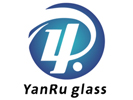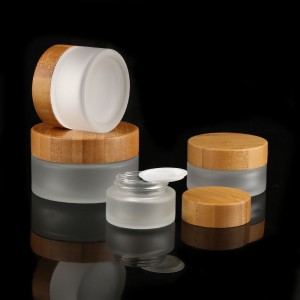Frosted glass bottle: Frosting refers to immersing a glass bottle in a prepared acidic liquid (or coating with an acid-containing slurry), using acid to erode the surface of the glass bottle, and adding ammonium hydrogen fluoride to the acid solution to form crystals on the surface of the glass bottle. Thus, the grinding process is done, and the surface of the glass bottle after grinding is unusually smooth and has a hazy effect due to the scattering of crystal formation. If the surface is relatively rough, it means that the corrosion of the glass bottle by the acid is serious, which is a manifestation of the immature craftsmanship of the frosting master. Or part of it has not yet crystallized (commonly known as not ground to the sand, or the glass has mottled), which also belongs to the poor process control of the master. This process is technically difficult. The advantage of this processing method is that crystals appear on the surface of the glass bottle. This crystal is formed under a critical condition, mainly because the hydrogen fluoride ammonia has reached the time when the fast sale is exhausted.
Sandblasted glass bottle: This process is very common. It uses a spray gun to blast the glass surface at high speed, so that the glass surface produces a fine uneven surface, so as to achieve the effect of scattering light and make the light pass through. The surface of the glass bottle made by the sandblasting process is rough, because the surface of the glass bottle is damaged, so it seems that the original bright glass is a white glass bottle. General crafting difficulty.
Post time: Apr-03-2022





